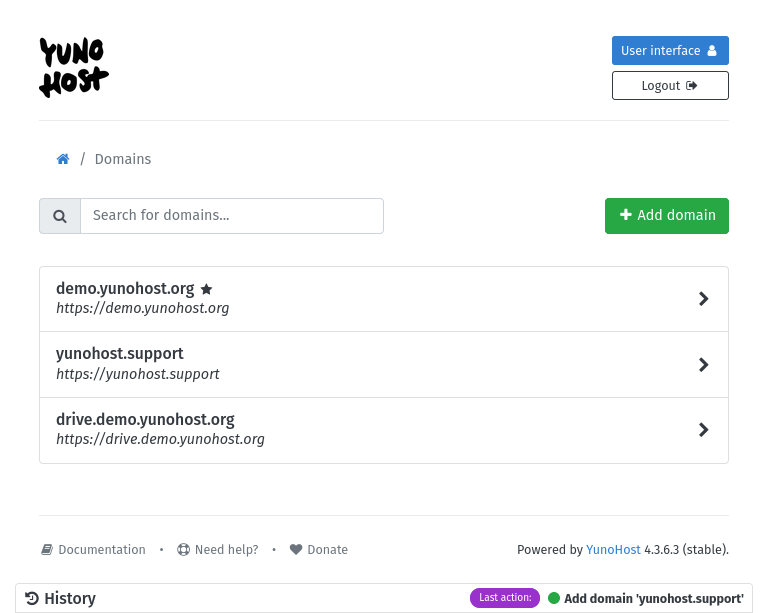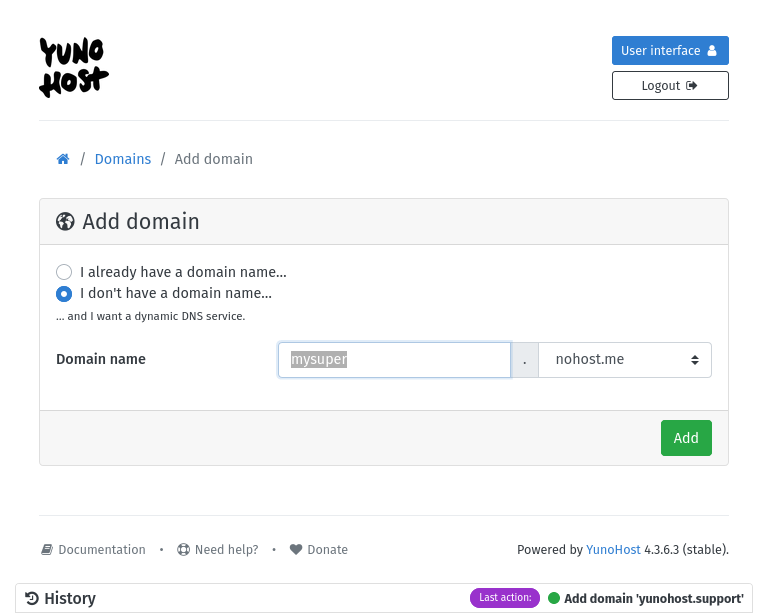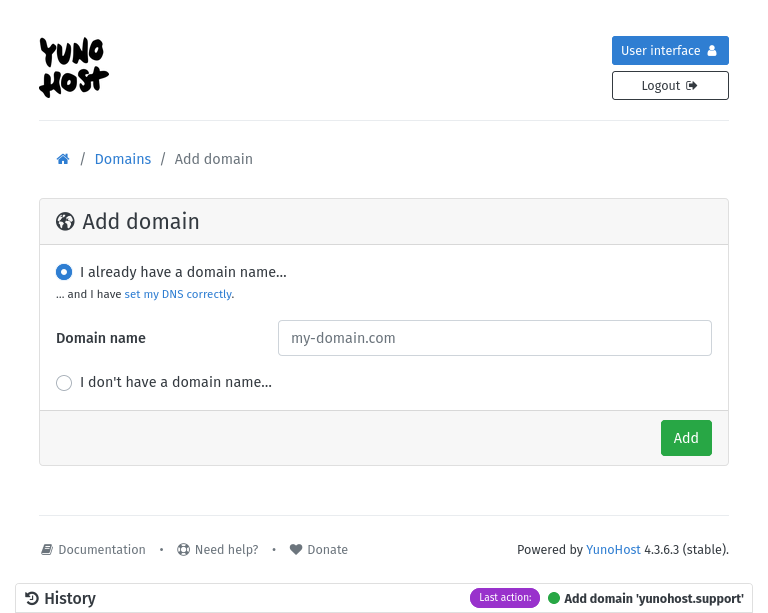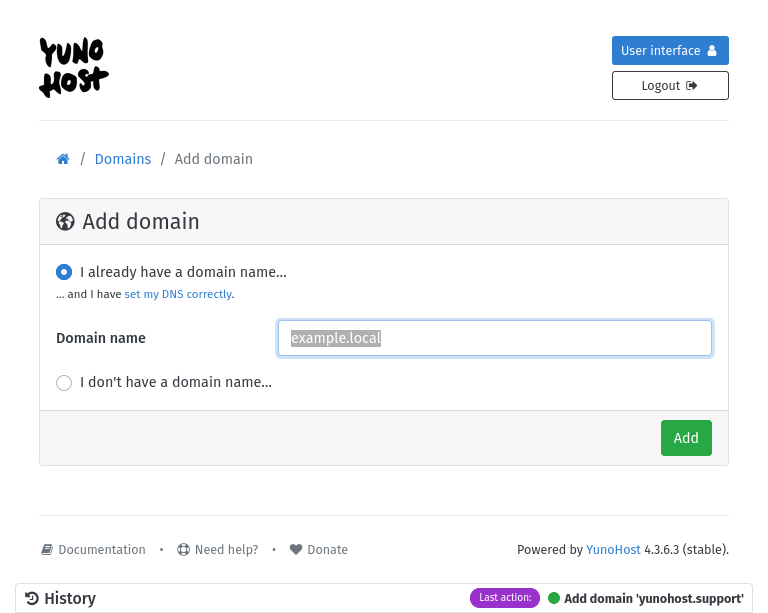Quick Menu
Domains
DNS (Domain Name System) is a system that allows computers from around the world to translate human-readable domain names (such as yolo.com) to machine-understandable addresses called IP addresses (such as 11.22.33.44). For this translation (and other features) to work, you must carefully configure DNS records.
YunoHost allows you to manage and serve several domains on the same server with the same public ip. For instance, you can host a blog and Nextcloud on a first domain yolo.com, and a web mail client on a second domain swag.nohost.me. Each domain is automatically configured to handle web services and mail services.
Domains can be managed in the 'Domain' section of the webadmin, or through the yunohost domain category of the command line.

3 types of domains
- YunoHost's domains (the free and easy way)
- Your own domains
- Local domains (only reachable in your local network)
In order to make self-hosting as accessible as possible, the YunoHost Project provides a free and automatically configured domain name service. By using this service, you won't have to configure DNS records yourself, which can be tedious and technical.
The following (sub)domains are offered:
whateveryouwant.nohost.me;whateveryouwant.noho.st;whateveryouwant.ynh.fr.
In more, YunoHost uses an integrated dynamic DNS mechanism, so your server can stay reachable even if your public IP change.
To get one of this domain you simply need to choose I don't have a domaine name… during the initial configuration (postinstall) or on the Add domain page.

To limit resources costs and abuses, each instance may only have one of these domains setup at any given time, however you can add as many sub-domains of it as you wish. For example, if you choose example.noho.st you can later add the domains video.example.noho.st or www.example.ynh.noho.st or any other sub-domain you may need. In this case you need to select I already have a domain name.
You have to keep a backup archive of the config file of your server if you want to be able to restore your server with this domain name without asking help of YunoHost team to recover access on it.
The main domain
The domain chosen during the initial configuration (post-install) is defined as the main (or default) domain of the server : this is where the user portal (SSO) will be available. The main domain can later be changed through the web admin in Domains > (the domain) > Set default, or with the command line yunohost tools maindomain.
More technically, the main domain is also used as hostname by SMTP protocol to send email (EHLO) and determine which value should be configured in the reverse DNS bind to your public IP. If this 2 values are mis-configured, the diagnosis tool will trigger you an alert.
Subdomains
Bear in mind, YunoHost considers domains and their subdomains independently. You need to register all the domains and subdomains you want to use.
About Non-latin characters
If your domain has special, non-latin characters, it will be transformed by YunoHost into its internationalized version through Punycode. So when you use the command line, you have to use the punycode format return for example by yunohost domain list.
SSL/HTTPS certificates
Another important aspect of domain configuration is the SSL/HTTPS certificate. YunoHost is integrated with Let's Encrypt, so once your server is correctly reachable from anybody on the internet through the domain name, the administrator can request a Let's Encrypt certificate. See the documentation about certificates for more information.
¿Encontraste errores? ¿Crees que puedes mejorar esta documentación? Simply click the Edit link at the top of the page, and then the icon on Github to suggest changes.

